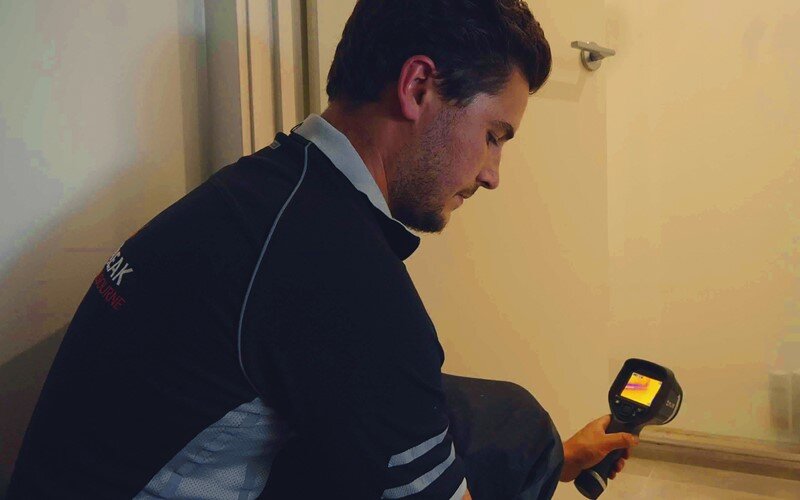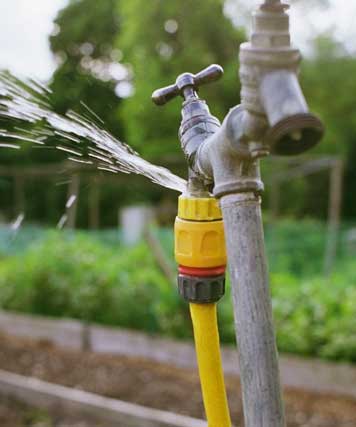Nearly everybody has their own individual thinking in relation to Finding hidden leaks.

The moment you discover a leak, calling your plumber for repair work is the best remedy. Some tiny water leakages might not be visible. If you can not identify it with your nude eyes, right here are some hacks that help.
Early discovery of dripping water lines can reduce a potential calamity. Besides saving you cash, it will lessen the stress and frustration.
Examine Water Usage
Assess your water expenses and track your water usage. As the one paying it, you should observe if there are any kind of inconsistencies. If you detect sudden changes, despite your intake being the same, it indicates that you have leaks in your plumbing system. Keep in mind, your water expense need to fall under the exact same variety every month. An abrupt spike in your bill indicates a fast-moving leak.
A steady rise every month, also with the exact same routines, reveals you have a sluggish leakage that's likewise slowly rising. Call a plumber to completely examine your residential or commercial property, especially if you feel a cozy location on your flooring with piping beneath.
Check and Examine the Scenario
Home owners need to make it a practice to inspect under the sink counters as well as also inside cupboards for any type of bad odor or mold growth. These two red flags indicate a leak so punctual focus is called for. Doing regular examinations, also bi-annually, can save you from a major problem.
Check Out the Water Meter
Every residence has a water meter. Inspecting it is a guaranteed manner in which assists you discover leakages. For starters, turn off all the water resources. Make sure no one will certainly purge, utilize the faucet, shower, run the cleaning machine or dish washer. From there, go to the meter and watch if it will certainly change. Considering that no one is using it, there ought to be no movements. If it moves, that shows a fast-moving leakage. Similarly, if you find no changes, wait an hour or two and also inspect back again. This suggests you may have a slow leakage that could also be underground.
Asses Outside Lines
Do not neglect to inspect your outdoor water lines too. Should water permeate out of the link, you have a loose rubber gasket. One tiny leakage can squander loads of water and increase your water bill.
Do a Food Coloring Examination
When it pertains to water usage, 30% originates from commodes. Examination to see if they are running effectively. Decrease specks of food shade in the container as well as wait 10 minutes. If the shade in some way infiltrates your dish throughout that time without flushing, there's a leakage between the tank and dish.
Inspect for discolorations as well as deteriorating as the majority of pipelines as well as devices have a life expectancy. If you suspect dripping water lines in your plumbing system, do not wait for it to intensify.
The moment you locate a leakage, calling your plumber for repair services is the best solution. Some little water leaks may not be noticeable. Inspecting it is a proven method that helps you find leaks. One small leak can throw away heaps of water and increase your water expense.
If you believe dripping water lines in your plumbing system, do not wait for it to escalate.
WARNING SIGNS OF WATER LEAKAGE BEHIND THE WALL
PERSISTENT MUSTY ODORS
As water slowly drips from a leaky pipe inside the wall, flooring and sheetrock stay damp and develop an odor similar to wet cardboard. It generates a musty smell that can help you find hidden leaks.
MOLD IN UNUSUAL AREAS
Mold usually grows in wet areas like kitchens, baths and laundry rooms. If you spot the stuff on walls or baseboards in other rooms of the house, it’s a good indicator of undetected water leaks.
STAINS THAT GROW
When mold thrives around a leaky pipe, it sometimes takes hold on the inside surface of the affected wall. A growing stain on otherwise clean sheetrock is often your sign of a hidden plumbing problem.
PEELING OR BUBBLING WALLPAPER / PAINT
This clue is easy to miss in rooms that don’t get much use. When you see wallpaper separating along seams or paint bubbling or flaking off the wall, blame sheetrock that stays wet because of an undetected leak.
BUCKLED CEILINGS AND STAINED FLOORS
If ceilings or floors in bathrooms, kitchens or laundry areas develop structural problems, don’t rule out constant damp inside the walls. Wet sheetrock can affect adjacent framing, flooring and ceilings.
https://www.servicemasterbyzaba.com/blog/how-to-detect-water-leakage-in-walls/

As a devoted person who reads on Top leak detection hacks, I assumed sharing that chunk was a smart idea. Sharing is good. One never knows, you may just be doing someone a favor. I appreciate reading our article about Hacks to detect leaks.